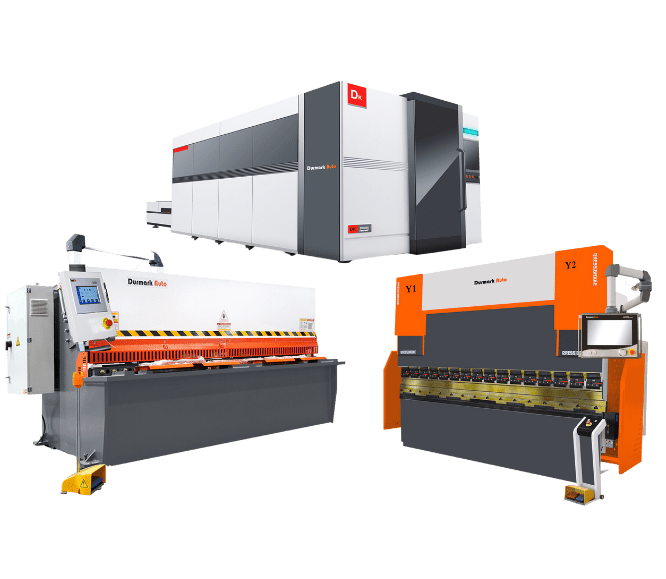
Request a Quote

Request a Quote

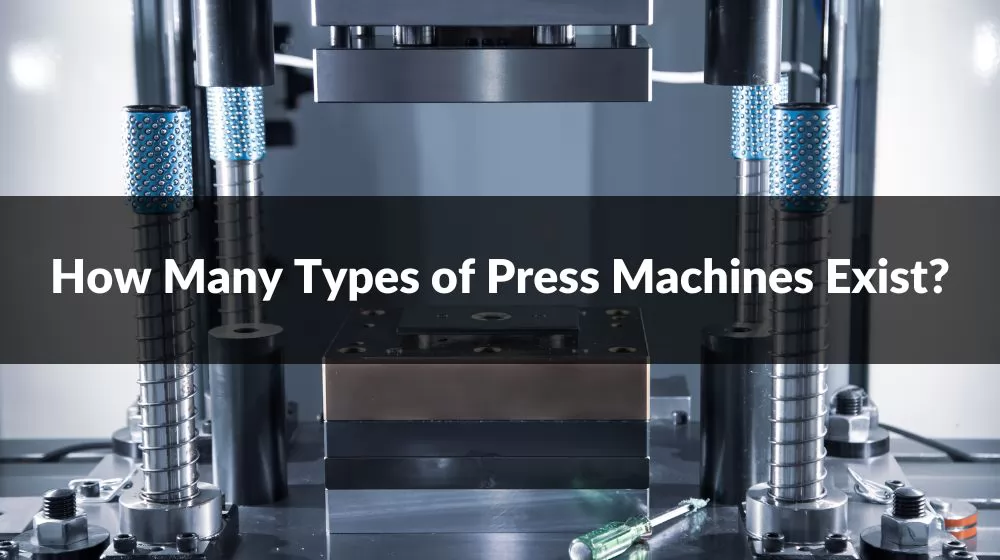
As an important processing equipment, press machines come in various types for selection. Each type of press machine has different working principles and application ranges, thus meeting the requirements of different industries and processing needs. The following will introduce some common types of press machines and their characteristics.
Before knowing how many types of presses there are, it is important to know what a press is. A press is an industrial mechanical device used to apply force or pressure to change the shape, structure or properties of an object. It usually achieves the processing or manipulation of an object by focusing force on a small area. Presses can be used in a variety of fields, including metalworking, plastic molding, rubber processing, wood processing, paper processing, and more.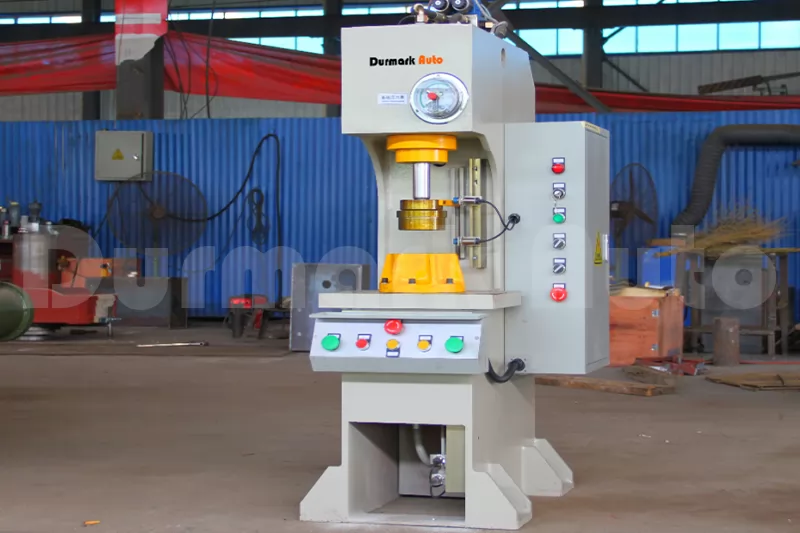
A press usually consists of a pressing device capable of applying force and a table or die for supporting and processing the object. By applying pressure, the press can make the object undergo plastic deformation, cutting, compression, molding and other processing processes. The working principle of the press can be mechanical transmission, hydraulic transmission, pneumatic transmission or electric transmission, depending on the different press types.
It plays an important role in the manufacturing industry, and they are widely used in metal processing industries, such as stamping, forging, bending, etc.; plastic and rubber industries, such as injection molding, calendering, etc.; and various other industrial fields. There are various types and specifications of presses, and the appropriate press type and parameters can be selected according to specific application requirements.
Advantages of presses:
A mechanical press is a press that uses mechanical transmission. It converts the rotary motion of a motor or other power sources into linear motion through a crank linkage mechanism, thereby realizing the application of pressure on the material.
The main components of a mechanical press include a motor (or other power source), a transmission system, a crank linkage, and a table. It works as follows:
Motor or other power source: Provides power to produce rotational motion.
Transmission system: transmits the rotational motion of the motor or power source to the crank linkage mechanism. A transmission system usually consists of transmission devices such as belts, gears or chains.
Crank linkage: converts rotary motion into linear motion. It consists of crankshaft, connecting rod and piston. Rotary motion from the motor or power source is transmitted through the crankshaft to the connecting rod, which then transmits linear motion to the piston.
Bench: The material is placed on the bench to receive the application of pressure. Tables usually have fixed or movable clamps to keep the material in a stable position.
Applying Pressure: When an electric motor or power source drives the crank linkage, the piston reciprocates along a linear path. During the movement, the piston exerts pressure via the connecting rod on the material to be processed.
The advantages of mechanical presses include simple structure, easy operation and low maintenance costs. However, due to its limited mechanical transmission, there may be limitations such as limited movement speed and relatively low precision. Therefore, specific processing needs and requirements need to be considered when selecting the type of press.
A hydraulic press is a pressure processing equipment that uses a liquid medium to transmit pressure. Unlike mechanical presses, hydraulic presses apply and control pressure through a hydraulic system.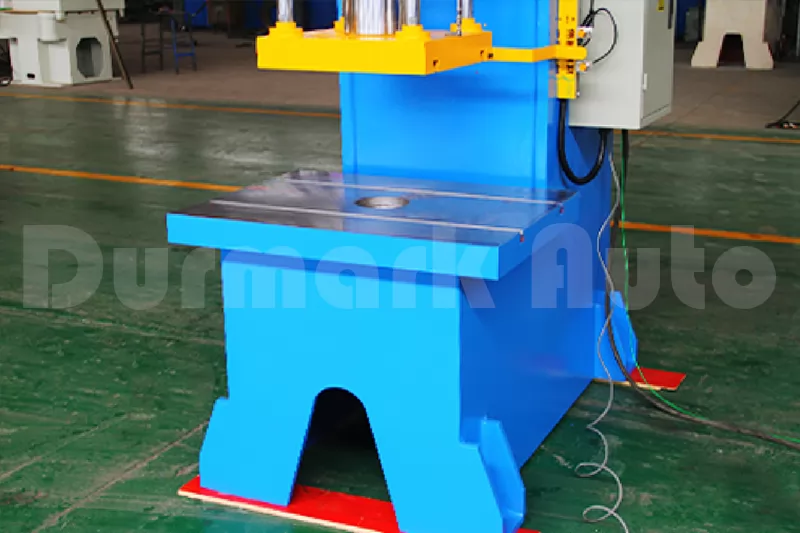
The operating principle of hydraulic presses is based on the incompressibility and force-transmitting properties of liquids. The hydraulic system consists of hydraulic pumps, hydraulic cylinders, hydraulic control valves and oil pipes. When the hydraulic pump starts, the hydraulic oil is pumped into the hydraulic cylinder, and the flow direction, flow rate and pressure of the hydraulic oil are adjusted through the control of the hydraulic control valve.
In the hydraulic cylinder, under the action of hydraulic oil, the force generated by the movement of the piston is transmitted to the material to be processed to realize the application of pressure. By adjusting the hydraulic control valve, the flow and pressure of the hydraulic oil can be precisely controlled, thereby controlling the magnitude of the pressure and the speed of the processing process.
The hydraulic press has the advantages of stable pressure, large force and smooth movement. It is suitable for processing tasks requiring high pressure and high precision, such as metal stamping, bending, drawing and other processes. The control and adjustment ability of the hydraulic system makes the hydraulic press have high flexibility and adaptability. By using different hydraulic control valves and accessories, hydraulic presses can meet various processing requirements and process needs.
Pneumatic presses use compressed air as a power source to apply pressure to materials through a pneumatic system. It works similar to the human breathing process.
The working process of a pneumatic press can be compared to the following steps:
Suction phase: The compressor compresses the air and supplies it to the pneumatic system. Just like a human inhales, the compressor collects and stores the air.
Storage stage: Compressed air is stored in the pneumatic system, just like the human lungs store air. This stored air will be used to drive the pneumatic cylinders.
Pushing phase: By adjusting the air-operated valve in the pneumatic system, compressed air is directed into the pneumatic cylinder. Similar to the contraction of human lungs, the piston in the pneumatic cylinder is pushed and creates motion.
Applying pressure: The movement of the piston generates force, which is transmitted to the material to be processed through the connection. This achieves the application of pressure to the material.
Exhaust phase: After completing the pressure application, the compressed air is released, similar to a human exhalation. The exhaust valve opens to release compressed air from the pneumatic cylinder.
Pneumatic presses are characterized by simple operation, fast response and low cost. It is widely used in the field of light processing and fast operation, such as assembly, clamping and stamping and other processes. By rationally designing the air circuit system and selecting appropriate pneumatic components, the pressure application of different processing needs and precision requirements can be met.
Electric press is a kind of press driven by electric motor, which converts electric energy into mechanical energy through electric motor to realize the pressure on the material. It has the characteristics of easy operation, precise control and high automation.
Electric presses are suitable for occasions that require precise control and automated production. Through the control system, parameters such as pressure, application speed and stop position can be adjusted. According to different processing needs, electric presses can be customized to meet specific processing requirements and technological processes.
A CNC press is a device that combines CNC technology and a press, with automation and precise control capabilities. It realizes the pressure application and processing operation on the material through the programming control system.
The main features of the CNC press are as follows:
Numerical control system: The CNC press is equipped with an advanced numerical control system, which controls the machining process through programming. Operators can input processing parameters and paths through the interface to control the movement and pressure application of the press.
Automated machining: CNC presses are able to automate machining operations, reducing the need for manual operations. By writing a suitable processing program, the automatic processing process can be realized and the production efficiency can be improved.
Precise control: CNC system can realize precise control of parameters such as pressure, speed, stroke and stop position. Through programming settings, high machining accuracy and repeatability can be achieved.
Multifunctional processing: CNC presses can realize various processing operations, such as punching, bending, stretching, etc., by changing different molds and tools. It has high flexibility and adapts to different processing needs.
CNC presses are widely used in many industries, such as metal processing, plastic processing, automobile manufacturing, etc. It provides a high degree of automation and precise control capabilities, improving production efficiency and product quality.
1. Starting from the processing requirements, determine the specific processing operations and processing materials that need to be processed using the press. Different presses are suitable for different processing tasks, such as punching, bending, stretching, etc.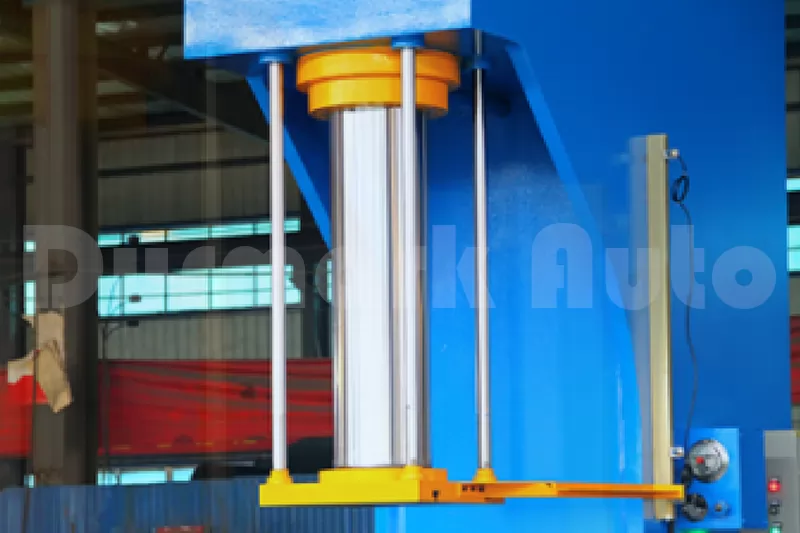
2. Considering the processing scale, if it is necessary to process a large number of processing tasks, it may be more appropriate to choose a press with high productivity and a high degree of automation. For small batch production or sample processing, it may be more advantageous to choose a press with an appropriate size and greater flexibility.
3. Selection of material properties, select the appropriate press type and pressure range according to the properties of the material to ensure that the processing requirements can be met.
4. Select the appropriate press according to the processing accuracy requirements. Some tasks require high-precision pressure control and motion control capabilities, so it may be more appropriate to choose a press with a precise control system and high repeatability.
5. Consider the safety and reliability factors of the press. Make sure that the selected press complies with relevant safety standards and regulations, and has reliable performance and durable structure to ensure the safety of operators and the stable operation of equipment.
6. Choose a press supplier with good reputation and reliable after-sales service. Good after-sales service can provide timely maintenance and support to ensure the normal operation and troubleshooting of equipment.
When choosing a press manufacturer, factors such as quality and reliability, technical capabilities, customization capabilities, after-sales service, cost-effectiveness, and customer reviews and word of mouth need to be considered. Choose a manufacturer with a good reputation and quality assurance, as well as advanced technical capabilities and customization capabilities. Make sure that the manufacturer can provide comprehensive after-sales service, including technical support and spare parts supply.
Considering the balance of price and performance, choose the most cost-effective manufacturer. At the same time, learn about the experience and opinions of other customers through customer reviews and word of mouth. Choose the right press manufacturer to meet your needs and ensure you are purchasing high quality and reliable presses.
There are many types of presses, each with its own unique working principle and specific field of application. By choosing the right type of press, companies can increase productivity, achieve high-quality machining results, and meet the needs of specific applications. If there is still something you don't understand, please contact us!
.png)


